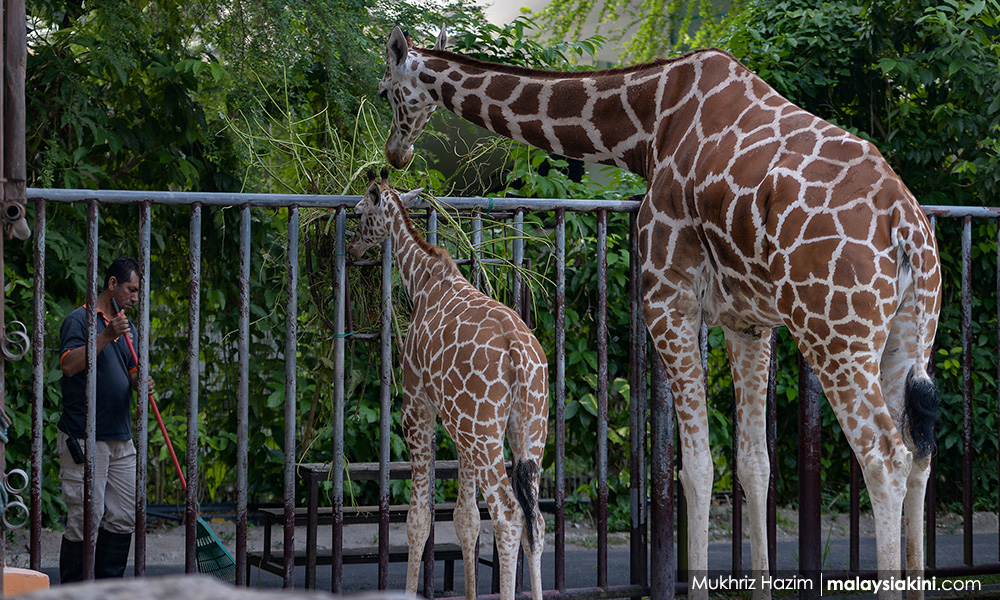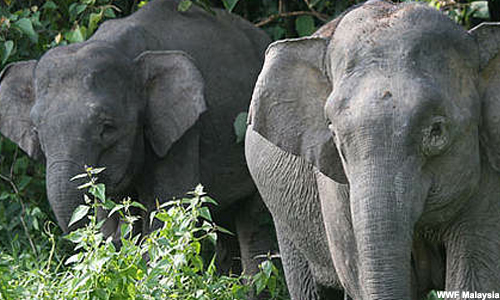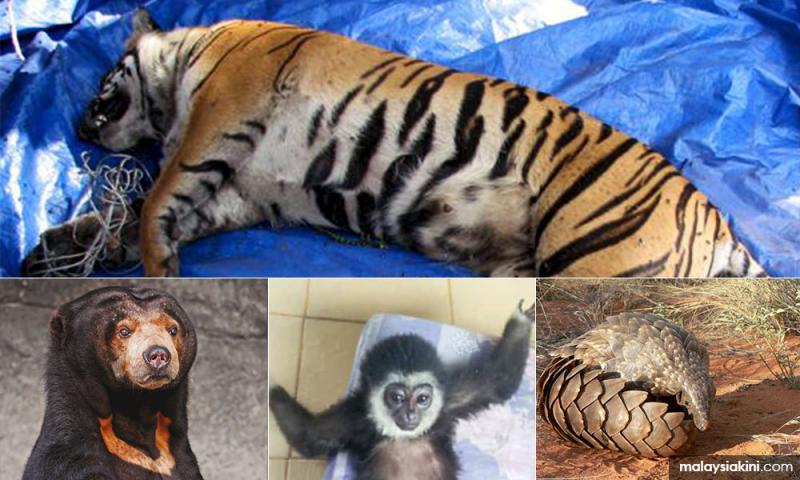LETTER | Global human life in danger, wildlife endangered!
LETTER | The plight of human life facing the scourge of Covid-19 has garnered global attention as the international community assesses the cost of human lives lost, the outlay for healthcare, economic losses, social upheaval and political instability that has occurred and will continue in the foreseeable future.
The fate of wildlife worldwide is no better as they suffer from habitat loss, poaching, disease, natural disasters, floods, fire, and drought. The 21st century saw the extinction of various species and this is the century that will decide whether Man can co-exist with wildlife on a win-win formula. 20 years of this century have gone by and there is not much improvement for wildlife globally. The remaining decades will prove whether Planet Earth will be called home by both Man and wildlife, or by Man alone. Covid-19 has given a new impetus to balance development and nature for holistic progress.
For mankind, a vaccine is being rushed through but wildlife are left to fend for themselves to counter the onslaught of Man against their natural habitat. Zoonotic diseases helped to protect wildlife but they are losing their sting as vaccines overcome them enabling people to continue preying on endangered wildlife. Zoonotic diseases are not the only problem as some diseases transmitted among humans are equally as deadly as was the case when European explorers to the New World (the Americas) passed on diseases that wiped out large populations of natives who had no immunity. The Covid-19 lockdown has given a flashback of the world decades ago. One could see pictures of leopards, elephants, civet cats, deer, and even lions entering villages and residential areas in many part parts of the world taking advantage of the lull in human activities during the lockdown, and possibly wanting to reclaim their lost habitat!
Global warming and climate change are adding to the woes of wildlife, which unlike Man, cannot easily adapt to changing conditions. The recent great Australian fire caused great destruction to wildlife and reportedly more than a billion creatures- big, small, and tiny – perished in the flames. The Earth’s temperature is going up by 1-2 degrees but many are denying it, and wildlife from polar bears to penguins are threatened. Doesn’t the smoke and heat resulting from a wide range of socio-economic activities cause a dent in the ozone layer? Can anyone think of an activity that cools the earth? The answer is an emphatic ‘none!’ Having endangered wildlife, how long can Man prevent the danger to himself? Nowadays, environmental degradation, pollution, and natural disasters are taking a heavy toll on nations, and billions of dollars have to be spent on repairs and rehabilitation, and some nations and politicians continue to be in denial mode about climate change despite nations being buffeted by a series of natural calamities.

Covid-19 could threaten wildlife even more than before as travel and tourism are devastated. Many wildlife sanctuaries have been funded and protected with tourism revenue and communities around the parks and reserves are sustained by this arrangement. When tourism declines, poaching and trafficking may increase, jeopardizing wildlife. Tourism has been affected much and the tourist dollar that supports conservation and wildlife habitats will dry up and open prospects for poaching and trafficking to overcome poverty and unemployment. Even with tourist revenues, there was the ever-present risk of poaching of endangered wildlife. According to Charles Darwin the success of any species depended on natural selection but presently it depends on human selection – which animals can be saved by conservationists and which will face extinction at the hands of poachers.
The time has come for Man to actively help wildlife escape extinction. India and China, despite their huge populations, are finding success in supporting and conservation of wildlife. In India the tiger, Gir Lions, Rhino, Gaur, elephants, and leopards continue to thrive and China too has found success with the rehabilitation of the Siberian tiger, various pandas, the Tibetan antelope, and many other animals. There are also successful rehabilitation efforts in the Americas, Europe, Russia, and Australia. A major concern is with sub-Saharan Africa and South East Asia which are volatile and risky for a wide range of wildlife brought by poaching, trafficking of wild animal parts, and agriculture. The Amazon, the Congo, Borneo, and New Guinea regions are at risk of agriculture and timber exploitation as these areas are not only huge but are well known for their bio-diversity.

It has now come to a stage where wildlife needs the active assistance of Man to prevent extinction, and various methods are implemented – research, culling, re-location, tagging of wild animals, patrolling of parks to prevent poaching, educating people near wildlife sanctuaries on the need to protect wildlife and eco-tourism benefits. In this regard, trophy hunting of large wildlife like lions, elephants, antelopes, deer, and buffaloes should be stopped in the Southern African countries. The largest and strongest of these animals symbolize the best of the species genetically and should be preserved, not killed for trophy hunting mainly by Western big game hunters. The episode of Cecil, the Kenyan lion, killed by a trophy hunter created much criticism and controversy, and this opportunity should have been used to ban trophy hunting outright, especially of endangered animals. Many of these species, male and female, need to be genetically strong to breed offspring that can survive in the wild in a fast-changing physical habitat. Many countries allow this practice as the hunters pay a high price for permits. These hunters could be persuaded to use tranquilisers instead of bullets to bring down their targets and after having satisfied their egos with a few photos of the downed animal, they can give an antidote to revive the animal. This is very much better than killing the animal.
Eco-tourists can also play a part as a pressure group forcing governments to act on wildlife conservation as they bring in tourism revenue to some cash-strapped African countries. They should oppose trophy hunting, poaching, and trafficking of endangered animal parts such as tusks and horns, skin, and game meat. They can also lend their voice when they see a need for pro-active government action. As an example, thousands of wildebeest, deer, antelopes, and zebras die when crossing the Mara River in Kenya during the annual migration mainly because of the extremely steep slopes of the river, much more than are killed by the river or land predators. Flooding has resulted in the steep slopes. It is a sad spectacle to see a huge number of animals falling one on top of the other and getting injured or dying in the process. This grim scenario is watched by tourists wanting to observe the migration who also park their vehicles near the banks of the river to get a closer view. One wonders why the government, which earns so much from eco-tourism, cannot flatten the steep slopes using excavators or create safer crossings along the river, and also prevent tourists from blocking the path of the migrating herds near the river. The migration now of thousands of wildebeest and others could end up as a trickle in the decades ahead if nothing is done to mitigate the losses. As I mentioned earlier wildlife needs active human intervention to ward off possible extinction.

The trans-location of endangered wildlife must be seriously considered. There were plans to relocate the Gir lions in Gujerat, India to Madya Pradesh in case of any war or other calamity but it has been put on hold for decades now. So is the plan to re-introduce the extinct Indian cheetah back in its natural habitat. Both the Indian cheetah and tiger were decimated by Indian royalty and the British before Indian independence. India has a successful conservation program for tigers, which have made a dramatic recovery in their numbers in recent decades. Wildlife in the deserts of the Middle East especially deer and antelopes have also recovered after a brush with extinction due to government efforts and so has the Siberian tiger recovered in numbers in the icy wilderness of Siberia due to the efforts of China and Russia. In the future, the translocation of endangered animals to large countries that offer better protection may become the final option.
Man forcibly has to play God to ensure the continued existence of wildlife especially those facing extinction. Nursing mother tigers especially in South East Asia need to be helped by providing meat or dead prey animals close to their lairs as a mother tiger's long absence endangers her cubs. This will help reduce the mortality rate of cubs and ensure that the tiger population increases. This method can be done to other extinction-facing animals especially the big cats. Similarly, if the number of lions or cheetahs goes down drastically in sub-Saharan Africa, this could be due to a shortage of prey or disease. However, if this is due to fierce competition from hyenas, then the culling of hyenas needs to be done to ensure the survival of lions and cheetahs, which are more endangered than hyenas. Wildlife experts and researchers can recommend the steps to be taken by the government. Even the forest dwellers, natives, and aborigines should not be allowed to hunt endangered wildlife. Hunting of prey animals by issuing permits and licenses needs to be strictly controlled even if the prey is abundant. Sale of game meat must be banned, and it is appreciable that China has taken strict measures to prevent a repeat of the Covid-19 pandemic. Abundant prey like deer, wild boar, antelope, and buffalo means easier kills for the big cats and less trespassing into villages or agricultural areas in search of food. Seeds of fruit and nut-bearing trees can be scattered in the forests by game rangers and the seeds may grow into trees and provide food for a wide array of animals to somewhat compensate for the loss of their habitat. Governments need to have a proactive program of compensating villagers and farmers who lose their crops or livestock to wild animals to prevent revenge-killing or poisoning. The battle for conservation is equally crucial at sea as it is on land and issues such as the finning of sharks, killing of whales, and over-fishing also need to be addressed.
Another controversial practice is the burning of confiscated loot such as rhino horns, elephant tusks and other items on a regular basis by various government authorities. Tens of millions of dollars worth of precious cargo goes up in flames giving those around a sense of false satisfaction. This practice needs to be criticized as these valuable items are unlike counterfeit contraband such as fake CDs or watches. The precious ivory can be stored for future use perhaps even to provide funds for wildlife conservation.

One has to criticize the WWF for not doing enough for wildlife globally. It is time the UN sets up a specialized agency for the protection of wildlife similar to the WHO or UNESCO. Simply positioning some VIPs to head the WWF is not enough. Wildlife conservation and protection are serious matters and only leaders who can voice out and criticize governments are needed to address the various issues. The Nobel Prize Committee could give more focus to conservationists, researchers, and NGOs protecting wildlife. It is time wildlife protection is separated from environmental issues because although they are linked, more focus needs to be given to the former. Pressure must be brought on governments that close an eye to corrupt practices allowing timber smuggling thereby encouraging deforestation or the smuggling of wildlife parts. Punishments to poachers, smugglers and others aiding or abetting should be severe. During the present lockdowns in many countries, the problems facing zoos were highlighted, especially poor revenue collection affecting the welfare of the animals. Governments need to have strict control of zoos to prevent abuse of the animals. It is also time that, legally, wild animals are given special rights – very much like human rights - to correct the injustice done to wildlife. It will be really good if wildlife protection had big-hearted leaders, like billionaire Bill Gates whose foundation helps with socio-economic programs, who could provide leadership and financial assistance . Helping wildlife conservation is truly rewarding and satisfying. Wildlife have no one to turn to except Man and governments to protect them. More young volunteers are needed for wildlife conservation. Planet Earth is also the home for wildlife, and education should encompass knowledge of conservation and the environment through exam topics for essays and comprehension for students as the young are the leaders of the future. In conclusion one can say that the Covid-19 pandemic has made it more difficult to give priority to the welfare of wildlife. Now, most governments will be focused on issues such as unemployment, socio-economic stimulus, and political stability and this could prevail for the whole decade. The Covid-19 pandemic could be a turning point - for the better or worse for wildlife.
The views expressed here are those of the author/contributor and do not necessarily represent the views of Malaysiakini.
RM12.50 / month
- Unlimited access to award-winning journalism
- Comment and share your opinions on all our articles
- Gift interesting stories to your friends
- Tax deductable
